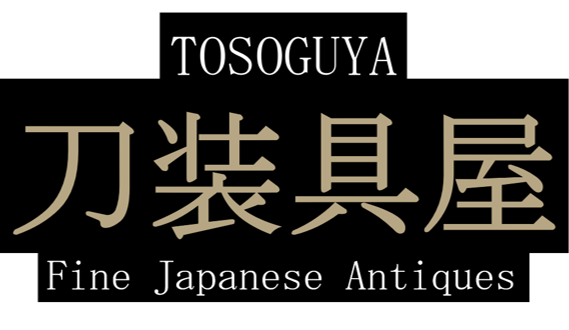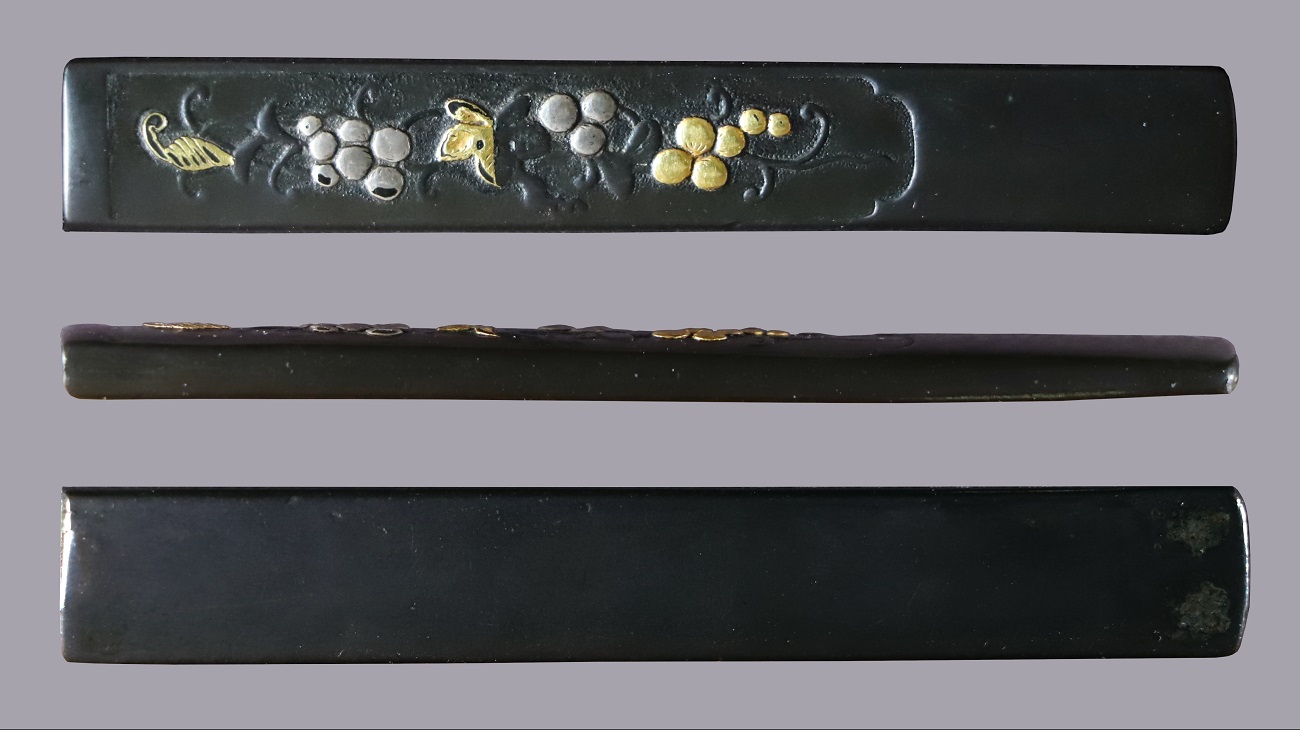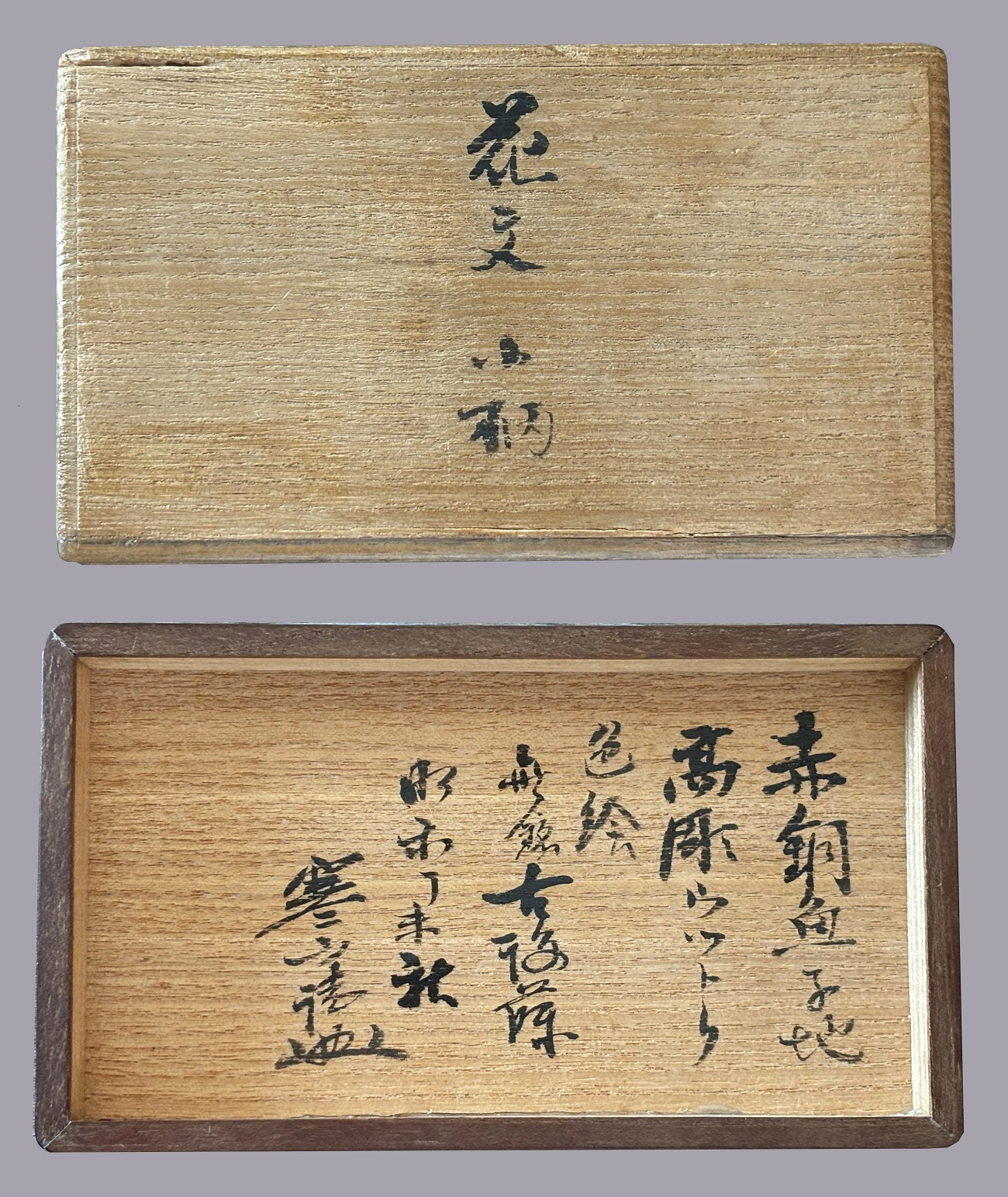

A very attractive early kozuka (小柄) of grapes and vines motif. The kozuka is made of shakudō (赤銅), with a very finely punched background of nanako (魚子地). The nanako has been rubbed down with use, attesting to the age of the piece. The motif itself is executed in carved relief or takabori (高彫). The grapes and vine leaves are emphasized with application of gold and silver foil, in a technique called uttori (うっとり), where the metal is mechanically overlain, and affixed in very fine furrows around the edges of the motif. The kozuka has an excellent deep black/purple patina.
This kozuka is termed kōgai-naoshi (笄直し), meaning that the decorative plate was originally an old kōgai, which was then refitted into a kozuka body. Indeed, you can see the slight color variation between the inset plate and the kozuka housing, as well as the characteristic outline of the kōgai plate on the right side. The solder point is along the back edge or mune, to avoid being cut by the kogatana blade. The kozuka has one solder line, along the spine edge or mune-tsugi (棟継ぎ), again a thoughtful location that minimized the likelihood of splitting from contact with the kogatana blade.
Kanzan Sato wrote an attestation or hako-gaki on the box lid. He felt that the kōgai was originally a Ko-Gotō work. The low, restrained style of the carving, coupled with the age of the piece might suggest Gotō Sōjō, who is known for common floral motifs. Comes with a nice custom fitted box.
Translation of the Kanzan Sato Hakogaki:
Lid:
唐花文 小柄 (Hana-mon kozuka)
Inside of Box:
赤銅魚子地 (Shakudō Nanako-ji)
高彫 うっとり (Takabori uttori)
色絵
(Iroe
無銘 古後藤 (Mumei Ko-Gotō)
昭和 丁未 秋 (Showa Hinoto-Hitsuji Aki -- Autumn 1967)
寒山 誌 (Kanzan Shirusu with kao)
Measurements: 9.26cm x 1.38cm x 0.47cm
Late Muromachi Period (室町後期時代), 16th century
$1,100

